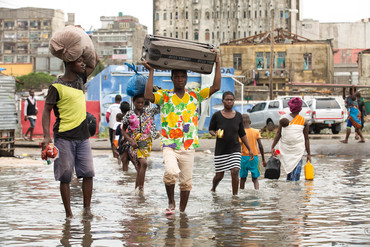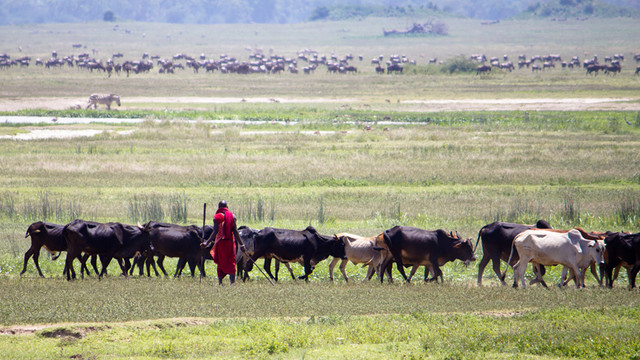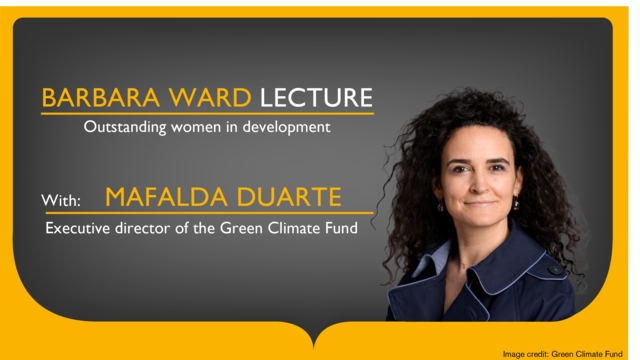Loss and damage fund: two funding frameworks reimagining climate finance delivery
How can the governing board of the new loss and damage fund ensure it offers best value for money and reaches those most in need while avoiding the mistakes made by previous climate funds? IIED’s Ritu Bharadwaj suggests five priorities for reimagining how the fund might work.


Residents in Belet Weyne, Somalia, have to cope with the effects of the flooding that has washed away homes, roads and bridges (Photo: UNSom, via Flickr, PDM 1.0)
In a groundbreaking moment at the 2023 United Nations climate change conference (COP28), the international community announced the long-awaited loss and damage fund, offering hope for communities most vulnerable to the climate crisis. But the fund’s new governing board inherits a legacy of challenges that have historically impeded climate finance mechanisms.
The board now has a significant opportunity to ensure that past mistakes are not replicated but serve instead as valuable lessons for the future. This will require a complete reimagining of climate finance delivery through direct transfer, right down to community levels.
The new loss and damage fund can bypass bureaucracy by drawing on the strengths and innovations of least developed countries (LDCs), Small Island Developing States (SIDS) and other developing countries to use technology and financial inclusion to administer direct cash or benefit transfers (DBT). This will ensure that swift and efficient support reaches the most vulnerable communities.
This approach both streamlines fund distribution and enhances community resilience by providing them with immediate financial resources to better manage climate crises.
Below, I outline two funding frameworks that will help the loss and damage fund’s board operationalise this approach. Under of these frameworks are key priorities for the board.
Funding framework one: transferring benefits directly to communities to respond to crises
Streamline how beneficiaries are identified
Taking cues from international successes, the loss and damage fund should focus on developing a digitised, integrated beneficiary database. For example, India’s DBT scheme’s use of the Aadhaar digital identification system has successfully reduced bureaucracy, ensuring timely and secure transfers directly to beneficiaries. This has saved the Indian government over 2.73 trillion rupees (approximately US$32 billion) by eliminating duplicates and ineligible beneficiaries across various welfare schemes.
This efficiency underscores the programme’s value for money. But it also highlights its scalability and adaptability in diverse contexts. Similar databases can be developed with support from LDC and SIDS governments by mapping out high climate-risk geographies and communities. Where no registries or databases exist, governments can encourage potential beneficiaries to self-register through public awareness campaigns, such as Cambodia’s ID Poor App.
Processes to authenticate beneficiary information and properly manage distribution should be clearly established by the LDCs and SIDS to avoid duplicates (one person receiving benefits from multiple sources) and ghosts (non-existent people receiving benefits).
Provide trigger-based funding
A trigger-based funding mechanism can deliver funds direct to communities. This mechanism is based on reliable early warnings or pre-defined risk thresholds for climate-induced calamities, which can automatically trigger payments to affected communities, providing swift, timely, predictable and adequate money.
It has been already proven effective across the global South: for instance, the African Risk Capacity provided $23 million to assist 353,000 people during the 2019 drought. Similarly, since 2007, the Caribbean Catastrophe Risk Insurance Facility has used trigger-based funding to disburse $268 million for disaster relief and recovery and to upgrade critical infrastructure following catastrophic hurricanes, earthquakes and excess rainfall events in the Caribbean.
Use accessible and appropriate payment options
The board should consider various payment options that meet the unique needs of different beneficiaries. The fund can provide direct bank transfers while also exploring alternative digital platforms to conventional banking services, such as mobile banking or the use of prepaid cards.
The success of mobile banking in Cambodia and Kenya shows how digital platforms can extend the reach and ensure the cost-effectiveness of cash transfers.
The loss and damage fund could also consider engaging with alternative financial networks, such as post offices or banking correspondents, particularly in remote or underrepresented areas.
Funding framework two: support for longer term resilience
Ensure equitable fund disbursement rooted in justice
The loss and damage fund should prioritise allocating funds to LDCs and SIDS as these countries are less able to withstand climate impacts.
Using metrics such as the Multidimensional Vulnerability Index can holistically assess vulnerability by encapsulating climate, environmental, social and economic indicators to guide climate finance allocation. This will ensure that resources are more accurately directed to those most in need and support sustainable, resilient development.
Provide untied grant funds for investing in longer-term resilience
Untied grant funds will enable LDCs and SIDS to invest in building longer-term resilience, such as comprehensive risk management that addresses the full spectrum of climate impacts, including economic and non-economic loss and damage.
The key is to support LDCs and SIDS to create national facilities as proposed under the ALL ACT initiative. These facilities can use grant finance to leverage and pool other sources of finance such as private-sector money, official development assistance, philanthropic funds and insurance. Giving LDCs and SIDS autonomy to manage and disburse different finance will allow them to deliver funds according to local needs and priorities, while showcasing how to use climate finance to leverage other sources of finance.
To do this, LDCs and SIDS will require a robust funding governance model, supported by existing decentralised networks and institutions with devolved decision making. Such a model will produce better outcomes by:
- Reducing transaction costs
- Ensuring better accountability
- Connecting the right funds to the right resilience projects
- Allowing for transparent experimentation,
- Scaling up good practice, and
- Encouraging systematic learning through monitoring, feedback and social audits.
Next steps
As the loss and damage fund’s board moves forward, LDCs and SIDS must advocate for integrating such approaches into how the fund operates. This should help craft a climate finance mechanism responsive to immediate needs while driving meaningful, long-term change in the face of escalating climate challenges.
By focusing on creating a structure that is agile, inclusive and fosters relationships with other funds, the board can ensure that the loss and damage fund becomes a model of efficiency and effectiveness with the potential for significant impact.




